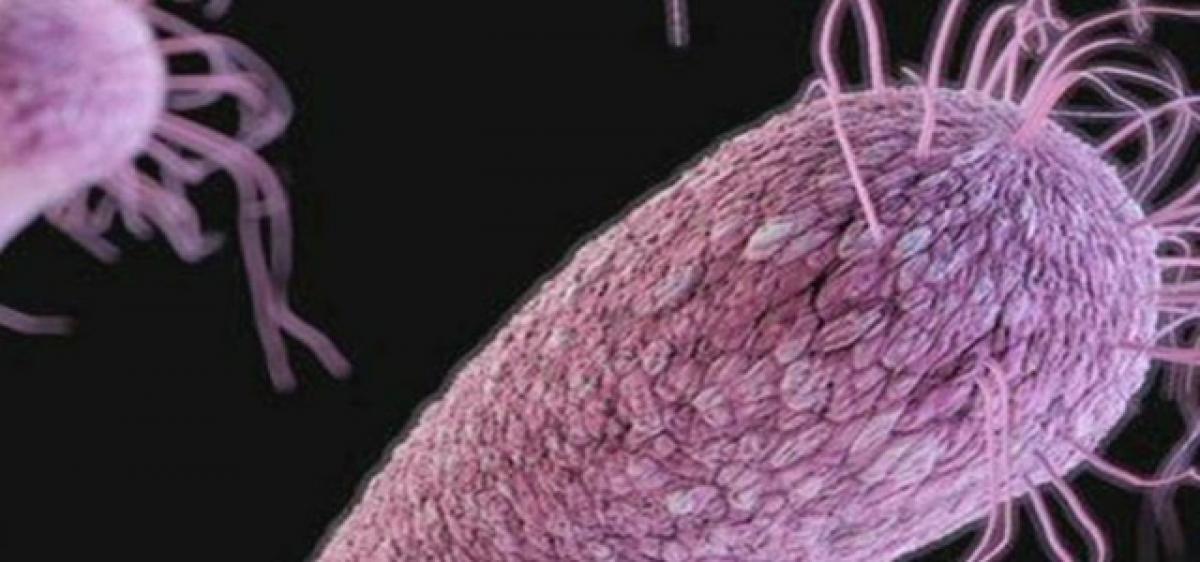Live
- Gadwal collector briefs on details of voters
- Jupally Krishna Rao takes part in Alampur rallu
- Bharath Prasad files 3rd Nomination
- Baisakh Month: A Time of Auspicious Beginnings and Sacred Festivals
- Oust BJD govt for overall development, says Shah
- Unveiling the Hidden Gems: Surprising Health Benefits of Garlic Peels
- Overcoming Sleep Struggles: A Comprehensive Guide to a Restful Night
- RTC bus hit the auto
- MLA Kuchukula Rajesh Reddy participated in the Birappa festival
- DMHO starts awareness campaign on Malaria
Just In

The deadly fungus, Candida auris, which has been found in hospitals, is resistant to entire classes of antimicrobial drugs, limiting treatment options for those infected.
The deadly fungus, Candida auris, which has been found in hospitals, is resistant to entire classes of antimicrobial drugs, limiting treatment options for those infected.
First reported in 2009, the fungus has been linked to invasive infections in nine countries, including the United States, and has caused at least two hospital outbreaks involving more than 30 patients each.
Now, in a first-of-its-kind study published in Antimicrobial Agents and Chemotherapy, microbiologists at Case Western Reserve University School of Medicine have provided previously uninvestigated details pertaining to C. auris drug resistance and growth patterns.
Based on specimens collected from around the globe, the comprehensive study also provides evidence that a new investigational drug (SCY-078) may help to cure these infections.
“This emerging fungal species has started to infect patients globally, causing invasive infections that are associated with a high death rate,” said Mahmoud Ghannoum, Professor and Director of the Center for Medical Mycology in the Department of Dermatology at Case Western Reserve School of Medicine, and University Hospitals Cleveland Medical Center.
“It is multidrug-resistant, and some strains isolated from patients are resistant to all commercially available antifungal drugs. Multidrug-resistance used to be reported for bacteria only, and now we must add fungi to the list.”
Ghannoum led the investigation of 16 strains of C. auris collected from infected patients in Germany, Japan, Korea, and India. The researchers tested the isolates against a battery of 11 drugs, belonging to different classes of antifungals, to identify drug concentrations that could combat infection.
While most samples proved at least partially resistant to drugs tested, low concentrations of an investigational drug (SCY-078) “severely distorted” the fungus and impaired its growth, providing an important step towards the development of this drug to treat C. auris infections.
Fungi exposed to the drug could not divide, suggesting it could halt infections or limit their spread. Ghannoum’s study is the first to provide details related to the effects of the investigational drug on C. auris.
The fungus lurks on catheters in intensive care units, where it forms highly drug-resistant communities, or biofilms. Ghannoum’s team exposed fungi in the laboratory to silicone surfaces mimicking catheters.
Under high-powered microscopes, they found C. auris formed relatively thin biofilms that weakened when exposed to the investigational drug. The findings were strain-dependent, but suggest applicability for the new drug to combat catheter-associated infections in particular.
Previous studies have shown the drug is effective against other Candida species that cause catheter-associated infections, including C. albicans and C. tropicalis. Said Ghannoum, “This drug is especially promising because of its broad anti-Candida activity, including activity against drug-susceptible and resistant strains.”
The study is also the first to report C. auris does not germinate and produce spores like other fungi, a surprise given its ability to rapidly spread in hospitals.
The researchers also discovered only certain strains produce destructive enzymes that commonly help fungi establish infections in body tissue.
Despite these apparent weaknesses, the fungus is able to maintain extreme drug-resistance and infect patients. According to the paper, the “multidrug-resistant phenotype of C. auris comes with a major fitness cost.”

© 2024 Hyderabad Media House Limited/The Hans India. All rights reserved. Powered by hocalwire.com







